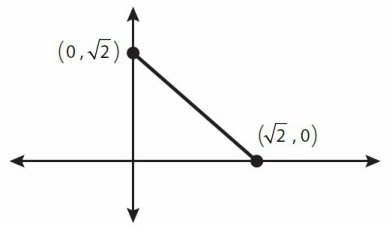Events & Promotions
|
|

GMAT Club Daily Prep
Thank you for using the timer - this advanced tool can estimate your performance and suggest more practice questions. We have subscribed you to Daily Prep Questions via email.
Customized
for You
Track
Your Progress
Practice
Pays
Not interested in getting valuable practice questions and articles delivered to your email? No problem, unsubscribe here.
- Nov 20
07:30 AM PST
-08:30 AM PST
Learn what truly sets the UC Riverside MBA apart and how it helps in your professional growth - Nov 19
12:30 PM EST
-01:30 PM EST
Learn how Keshav, a Chartered Accountant, scored an impressive 705 on GMAT in just 30 days with GMATWhiz's expert guidance. In this video, he shares preparation tips and strategies that worked for him, including the mock, time management, and more - Nov 20
01:30 PM EST
-02:30 PM IST
Learn how Kamakshi achieved a GMAT 675 with an impressive 96th %ile in Data Insights. Discover the unique methods and exam strategies that helped her excel in DI along with other sections for a balanced and high score. - Nov 22
11:00 AM IST
-01:00 PM IST
Do RC/MSR passages scare you? e-GMAT is conducting a masterclass to help you learn – Learn effective reading strategies Tackle difficult RC & MSR with confidence Excel in timed test environment - Nov 23
11:00 AM IST
-01:00 PM IST
Attend this free GMAT Algebra Webinar and learn how to master the most challenging Inequalities and Absolute Value problems with ease. - Nov 24
07:00 PM PST
-08:00 PM PST
Full-length FE mock with insightful analytics, weakness diagnosis, and video explanations! - Nov 25
10:00 AM EST
-11:00 AM EST
Prefer video-based learning? The Target Test Prep OnDemand course is a one-of-a-kind video masterclass featuring 400 hours of lecture-style teaching by Scott Woodbury-Stewart, founder of Target Test Prep and one of the most accomplished GMAT instructors.
Kudos
Bookmarks
C
Be sure to select an answer first to save it in the Error Log before revealing the correct answer (OA)!
Difficulty:
 95%
(hard)
95%
(hard)
Question Stats:
17% (02:08) correct 83%
(01:59)
wrong
83%
(01:59)
wrong  based on 640
sessions
based on 640
sessions
History
Date
Time
Result
Not Attempted Yet
The random variable x has the following continuous probability distribution in the range \(0 ≤ x ≤\sqrt{2}\), as shown in the coordinate plane with x on the horizontal axis:

The probability that x < 0 = the probability that \(x > \sqrt{2} = 0\).
What is the median of x?
A. \(\frac{\sqrt{2} - 1}{2}\)
B. \(\frac{\sqrt{2}}{4}\)
C. \(\sqrt{2} - 1\)
D. \(\frac{\sqrt{2} + 1}{4}\)
E. \(\frac{\sqrt{2}}{2}\)

BK8gXRh.jpg [ 13.65 KiB | Viewed 21003 times ]
The probability that x < 0 = the probability that \(x > \sqrt{2} = 0\).
What is the median of x?
A. \(\frac{\sqrt{2} - 1}{2}\)
B. \(\frac{\sqrt{2}}{4}\)
C. \(\sqrt{2} - 1\)
D. \(\frac{\sqrt{2} + 1}{4}\)
E. \(\frac{\sqrt{2}}{2}\)
Attachment:
BK8gXRh.jpg [ 13.65 KiB | Viewed 21003 times ]
Kudos
Bookmarks
Bunuel
An interesting question...
The frequency of x is given by the slanting line and x is between 0 and √2
Now the median will require knowing the centre point of this so formed triangle with x axis and y axis..
It will happen where a line drawn horizontally divides the so formed triangle in two equal areas..
Area of bigger triangle = 1/2 *√2*√2=1
So the are of smaller triangle should be 1/2
And let this happen at distance A from √2. Since the triangles - smaller and bigger - both are similar, the vertical line will also be A.
Area now =1/2 *A*A=1/2....A^2=1...A=1
The x axis is √2 and median lies 1 away from √2, so √2-1
C
Attachments
PicsArt_07-08-06.25.35.jpg [ 9.12 KiB | Viewed 19454 times ]
General Discussion
Kudos
Bookmarks
Bunuel
Bunuel,
The question statement says \(0 ≤ x ≤\sqrt{2}\) and from the graph, the probability of x being \(\sqrt{2}\) is 0. So I guess the question statement should say \(0 ≤ x <\sqrt{2}\) ?

















